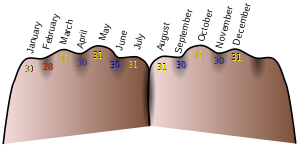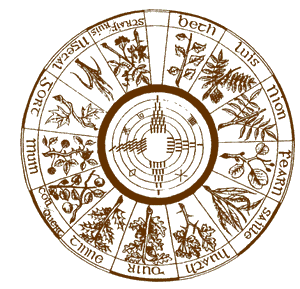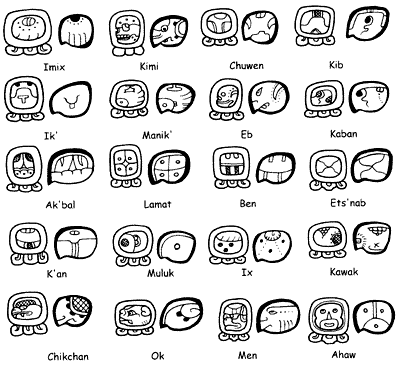GREGORIAN CALENDAR
The Gregorian solar calendar was introduced by Pope Gregory XIII, by a decree signed on 24 February 1582. It is an arithmetical calendar. It counts days as the basic unit of time, grouping them into years of 365 or 366 days; and repeats completely every 146,097 days, which fill 400 years, and which also happens to be 20,871 seven-day weeks. Of these 400 years, 303 common years have 365 days and 97 leap years have 366 days. A Gregorian year is divided into twelve months:
The Origins of English naming used by the Gregorian calendar:
January: Janus (Roman god of gates, doorways, beginnings and endings)
February: Februus (Etruscan god of death) Februarius (mensis) (Latin for "month of purification (rituals)" it is said to be a Sabine word, the last month of ancient pre-450 BC Roman calendar). It is related to fever.[48][49][50]
March: Mars (Roman god of war)
April: "Modern scholars associate the name with an ancient root meaning 'other', i.e the second month of a year beginning in March."[51]
May: Maia Maiestas (Roman goddess)
June: Juno (Roman goddess, wife of Jupiter)
July: Julius Caesar (Roman dictator) (month was formerly named Quintilis, the fifth month of the calendar of Romulus)
August: Augustus (first Roman emperor) (month was formerly named Sextilis, the sixth month of Romulus
September: septem (Latin for seven, the seventh month of Romulus
October: octo (Latin for eight, the eighth month of Romulus
November: novem (Latin for nine, the ninth month of Romulus
December: decem (Latin for ten, the tenth month of Romulus
No. | Name | Days |
1 | 31 | |
2 | 28 or 29 | |
3 | 31 | |
4 | 30 | |
5 | 31 | |
6 | 30 | |
7 | 31 | |
8 | 31 | |
9 | 30 | |
10 | 31 | |
11 | 30 | |
12 | 31 |

You can work out the months on your knuckles...
English speakers sometimes remember the number of days in each month by memorizing a traditional mnemonic verse:
Thirty days hath September,
April, June, and November.
All the rest have thirty-one,
Excepting February alone,
Which hath twenty-eight days clear,
And twenty-nine in each leap year.
Many countries did not use the Gregorian calendar, but it gradually came to be accepted until the 20th century.

You can work out the months on your knuckles...
English speakers sometimes remember the number of days in each month by memorizing a traditional mnemonic verse:
Thirty days hath September,
April, June, and November.
All the rest have thirty-one,
Excepting February alone,
Which hath twenty-eight days clear,
And twenty-nine in each leap year.
Many countries did not use the Gregorian calendar, but it gradually came to be accepted until the 20th century.
The summer/winter solstices and the autumn/spring equinoxes are important festivals as are 4 other festivals in the year.


Dec. 24 Jan. 21 I am a stag of seven tines Beith the Birch
Jan. 22 Feb. 18 I am a wide flood on a plain Luis the Rowan
Feb. 19 Mar. 18 I am a wind on the deep waters Nuinn the Ash
Mar. 19 Apr. 15 I am a shining tear of the sun Fearn the Alder
Apr. 16 May 13 I am a hawk on a cliff Saille the Willow
May 14 Jun. 10 I am a fair amongst flowers Huath the Hawthorn
Jun. 11 Jul. 8 I am a god who sets the head afire with smoke Duir the Oak
Jul. 9 Aug. 5 I am a battle-waging spear Teinn the Holly
Aug. 6 Sep. 2 I am a salmon in a pool Coll the Hazel
Sep. 3 Sep. 30 I am a hill of poetry Muinn the Vine
Oct. 1 Oct. 28 I am a ruthless boar Gort the Ivy
Oct. 29 Nov. 25 I am a threatening noise from the sea Ngetal the Reed
Nov. 26 Dec. 22 I am a wave of the sea Ruis the Elder
Dec. 23 Who but I knows the secret of the unhewn dolmen?
Jan. 22 Feb. 18 I am a wide flood on a plain Luis the Rowan
Feb. 19 Mar. 18 I am a wind on the deep waters Nuinn the Ash
Mar. 19 Apr. 15 I am a shining tear of the sun Fearn the Alder
Apr. 16 May 13 I am a hawk on a cliff Saille the Willow
May 14 Jun. 10 I am a fair amongst flowers Huath the Hawthorn
Jun. 11 Jul. 8 I am a god who sets the head afire with smoke Duir the Oak
Jul. 9 Aug. 5 I am a battle-waging spear Teinn the Holly
Aug. 6 Sep. 2 I am a salmon in a pool Coll the Hazel
Sep. 3 Sep. 30 I am a hill of poetry Muinn the Vine
Oct. 1 Oct. 28 I am a ruthless boar Gort the Ivy
Oct. 29 Nov. 25 I am a threatening noise from the sea Ngetal the Reed
Nov. 26 Dec. 22 I am a wave of the sea Ruis the Elder
Dec. 23 Who but I knows the secret of the unhewn dolmen?
One of the most commonly accepted beliefs holds that the year was divided into thirteen months with an extra day or so the end of the year used to adjust the calendar. This theory states that the months correspond to the vowels of the Ogmah or Celtic tree alphabet. Robert Graves is the major proponent of this school. The evidence he gives is more poetic than archaeological. His interpretation of an ancient poem, The Song of Amergin, appears to be the basis for this calendar. (Above)
From Caesar we know the Celts counted by nights and not days and in reckoning birthdays and new moon and new year their unit of reckoning is the night followed by the day. This concept survives in the English term "fortnight," meaning fourteen nights, or two weeks. Pliny ascribes this form of time measuring specifically to the Druids, "... for it is by the moon that they measure their months and years and also their ages (saeculi) of thirty years."
MAYAN CALENDAR
Apparently this image above, although commonly known as a mayan calendar is actually an aztec calendar!

This is a version of the mayan calendar...

The Tzolkin is the most ancient of the Mayan calendars, dating back to at least 600 BC. The Tzolkin is based on a 260 day cycle rather than the 365 day calendar used today. You may ask, “Why 260 days rather than 365?” The Maya people have a 365 day civil calendar also, called the Haab. While vital to this system of timekeeping, the Haab was most often used to monitor the more commonplace events of the year.
Think of it like this… in the modern world we have days of the week such as Monday the 1st or Thursday the 15th. In the Mayan system we would have days such as “Uac Lamat” or “Six Star” in English. But rather than progressing at seemingly random intervals, such as it seems with our modern calendar, the days of the Tzolkin rotate in perfect synchronicity and harmony.
The name and number days of the week are represented as symbols (also known as glyphs) in a ratio of 20:13 – meaning 20 days and 13 numbers. The glyphs representing the name of the days are images from the natural world, such as “Jaguar,” “Storm,” and “Sun,” or in the Mayan language “Ix,” “Cauac,” and “Ahau.” The numbers of the calendar days are represented as a series of dots and dashes. One dot = 1, one dash = 5. So for example, three dots in a row would equal the number 3. A dash with three dots next to it equals the number 8.
The 2012 Debate
There is a notion floating around that the Mayan calendar “ends” in the year 2012. Apparently though, the Mayan calendar is designed to note time infinitely into the past and future. According to the Mayan calendar and Mayan prophecy, what we are at the end of is the current “world age.” The current world age began in 3114 B.C. (the dawn of civilization) and will end in 2012. The Mayan calendar will “re-set at zero” so to speak, but it does not “end,” per se.
Our solar system is also passing through a “galactic alignment” with the center of the Milky Way galaxy, which only happens once every 26,000 years. The Mayans calculated this alignment to peak in 2012. We live in historical times indeed!
Mayan prophecy does not view 2012 as the end of the world, but rather the end of a world age. A shift from a more competitive and egocentric era to a more cooperative, balanced and spiritual way of life.
CHINESE CALENDAR
The Chinese Lunar New Year is the longest chronological record in history, dating from 2600BC, when the Emperor Huang Ti introduced the first cycle of the zodiac. Like the Western calendar, The Chinese Lunar Calendar is a yearly one, with the start of the lunar year being based on the cycles of the moon.



ZODIAC CALENDAR
The zodiac also form a type of calendar mapping the months of the year as zodiac signs although this is not used as an official calendar, but rather for horoscope use only.

REF:
No comments:
Post a Comment